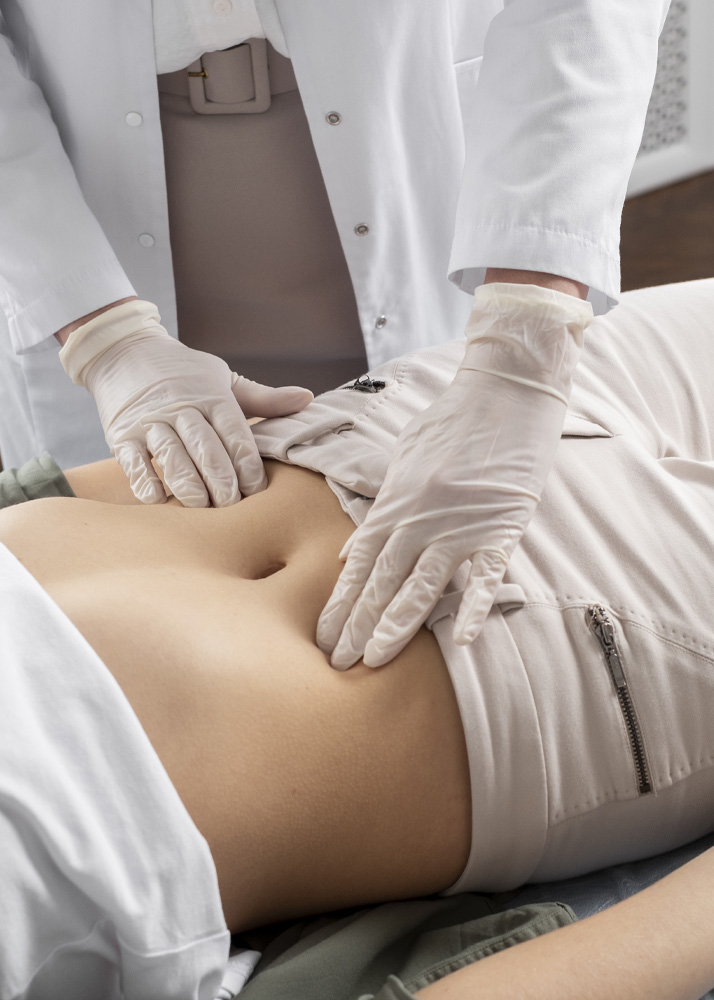Endometriosis

What is Endometriosis?
Endometriosis is a life-long condition that affects more than one in ten women during their reproductive years. It typically starts in a woman’s late twenties, and it’s a condition where tissue that usually lines the uterus (endometrium) grows outside of the uterus.
Symptoms of endometriosis
Endometriosis can cause distressing symptoms, including:
How is endometriosis diagnosed?
Many women have suffered with symptoms for years before they come to see me in the clinic, and often, they’ve experienced a considerable delay before a diagnosis of endometriosis is confirmed. This is because endometriosis symptoms overlap with many other conditions and can manifest in different ways.
Laparoscopy (a surgical procedure to look inside the abdomen with a camera) is the gold-standard technique to make the diagnosis of endometriosis definitively. Scans and internal examination are not sufficient to make the diagnosis. Sometimes, however, an MRI may be helpful and may be required to rule out other conditions.
Endometriosis and fertility
Many women are concerned that endometriosis will affect their fertility, and whilst there is indeed an association between endometriosis and fertility problems, it’s thought that around two-thirds of women with endometriosis can get pregnant without medical intervention.
We don’t fully understand why endometriosis can cause infertility, but it may be because the disease process creates scarring, which can affect the fallopian tubes and the womb.
Sometimes, surgery to treat the affected areas can improve fertility in women who have mild endometriosis, and many women benefit from assisted reproduction techniques, such as IVF.
Treatment of endometriosis
We don’t yet have a cure for endometriosis, but much can be done to help manage it. Endometriosis treatment consists of medications (such as hormone treatments and pain relief) and surgery.
Hormonal treatment for endometriosis
Endometriosis is oestrogen-dependent; in other words, blocking the action of oestrogen on the areas of endometriosis prevents tissue growth and reduces pain. The treatment ceases to work when stopped, and it can’t reverse scarring (adhesions) or improve fertility.
Hormonal treatments can include:
Endometriosis surgery
The goal of surgery for endometriosis is to help reduce pain or to improve fertility.
Laparoscopy, a minimally invasive, keyhole surgical technique, can remove or destroy endometrial patches (with diathermy). Whilst further patches may grow, this kind of surgery can reduce pain by around two-thirds and also double conception rates in women who have mild endometriosis.
Hysterectomy to remove the womb (with or without the removal of the fallopian tubes and ovaries) may be an option for women whose symptoms haven’t been sufficiently improved after other treatments, mainly where the endometriosis lesions are growing within the wall of the uterus, known as adenomyosis.
Some patients have advanced or widespread endometriosis, which may involve parts of the bowel, and major surgery involving bowel resection may be needed. Such surgery is carried out via a large incision on the abdomen, involving a multidisciplinary team of clinicians. I refer my patients to specialist endometriosis centres in this situation.
Living with endometriosis
There’s no doubt that endometriosis can impact a woman’s quality of life. Living with pain not only brings physical distress but there’s also an emotional toll, which affects both the individual and those around her. It can feel isolating, and women may be financially impacted because of time off work.
I believe in a holistic approach to helping women with endometriosis, and this may include the help of other professionals, such as physiotherapists and pain management experts.
If you think you may have endometriosis, or if you’re looking for help after a recent diagnosis, do come to see me.
